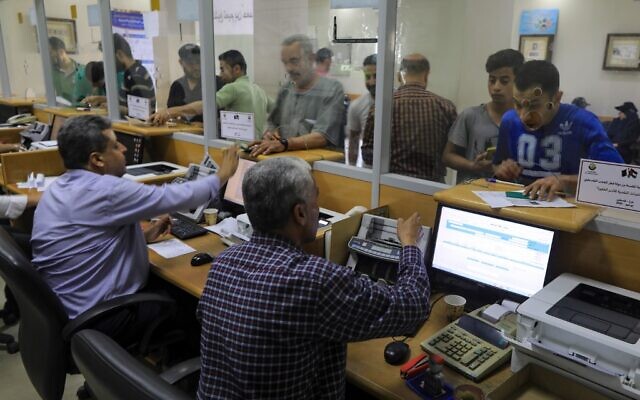


It has been my dream for the last four years to use blockchain technology to enable social impact, but even more specifically – to use our technology at Orbs to create transparency in international aid. My years of experience as a donor and as an advisor in the Israeli government helped fuel within me the desire to fix a system that is clearly broken on a global level. It is common, and in fact, silently acceptable, that international aid funds go astray, and, in our neighborhood, even funding terror instead of providing much-needed humanitarian aid.
Recently I discussed how blockchain technology can be used to track humanitarian aid to Gaza in order to prevent aid dollars from reaching terrorist organizations. . The largest single provider of international aid funds to Gaza over the last decade has been Qatar. In this piece I would like to detail their giving, and show how, combined with our solution, we could potentially create a mechanism that will alter the way in which international institutions distribute aid, and create transparency and accountability.
Some background: Since 2008, Israel and Hamas have had three armed conflicts, the most recent of which was in May 2021. With Israel’s consent, Qatar provided Gaza with over $1 Billion from 2012 to 2018. Within a few weeks of the end of the last conflict, Qatari fund flow was renewed, again with Israel’s consent. However, history has shown that over $1.25 Billion of funds have sadly been siphoned to Hamas for terror financing, and thus did not achieve the humanitarian purpose. This is tragic for many reasons, but also because of the fact that 80% of Gazans rely on these aid funds. Therefore, it should be of global interest to optimize the distribution procedure and make it as smooth, secure and transparent – as possible. Smooth, in order to avoid any friction involved with waiting hours in lines, verifying that there are no duplicate distributions, etc. Secure, in order to make sure that funds are provided to the people and do not end up in Hamas hands. Transparent, in order to provide accountability to the funders and perhaps even encourage more giving. img

Palestinians receive their financial aid, 100 USD per needy family offered by Qatar, at a post office in Gaza City on June 27, 2020. (Photo by MAHMUD HAMS / AFP)
It is estimated that over 50% of the adult population in Gaza is unbanked. Consequently, it is not surprising that the current funds distribution mechanism is very rudimentary – Gazans stand in line to receive $100 per family. No doubt that it is neither smooth nor secure, and I would also argue questionably transparent.
Technology and innovation can significantly improve the process. We can now create an efficient mechanism to distribute aid funds and satisfy all three of the above-discussed requirements.
The platform would utilize the Orbs funds track and trace solution, deployed with CBDC, and would work as follows:
Clearly, there are significant benefits to using this platform instead of continuing with cash distributions:
Of course, like every system, this one has its challenges. As is the case with any CBDC platform, user privacy is an issue. The ledger is immutable, meaning that all transactions are documented forever. Even if the platform is not public and permissionless, it still means that authorized parties will have full access to aid funds recipients’ transaction history. One may rightfully argue that this is a severe infringement of their privacy. I tend to agree to a certain extent, with two objections. The first is that this so-called infringement is inherent to CBDC platforms in general, not necessarily Orbs funds track and trace solution. By the way, there are already several suggestions to tackle this type of privacy challenges. Second, as I have repeated several times while discussing this topic, the enemy of the good is the perfect. A functioning and practical system that satisfies core requirements in an area of conflict and terror can never be a perfect solution. Currently, the international community is underfunding Gaza due to the justifiable concern that Hamas will use the monies to support terror activities. Would it not be better to instead deploy a solution now that would profoundly impact Gazans’ financial well-being, and improve user privacy in future versions?
The situation in Gaza is dire. If Hamas continues to utilize aid funds to construct tunnels and purchase military equipment, the cycle of violence will continue, and even as Gaza is rebuilt – it will only be temporary until the next conflict. However, if Hamas does not have access to aid funds due to a transparent and efficient system that truly directs funds towards citizens and not to a terrorist organization, then perhaps we can create a respite from the conflict. A lot needs to happen before the lives of the people in Gaza improve. For decades, international communities have reached out in an attempt to assist, only to see their funds go astray. It is time for accountability and for transparency. Using a CBDC based track and trace solution is a clear step forward that would ameliorate the situation, strengthen the financial independence of innocent civilians, and ensure donor countries that their monies are being used for good instead of evil.
We use cookies to ensure that we give you the best experience on our website. By continuing to use our site, you accept our cookie policy.